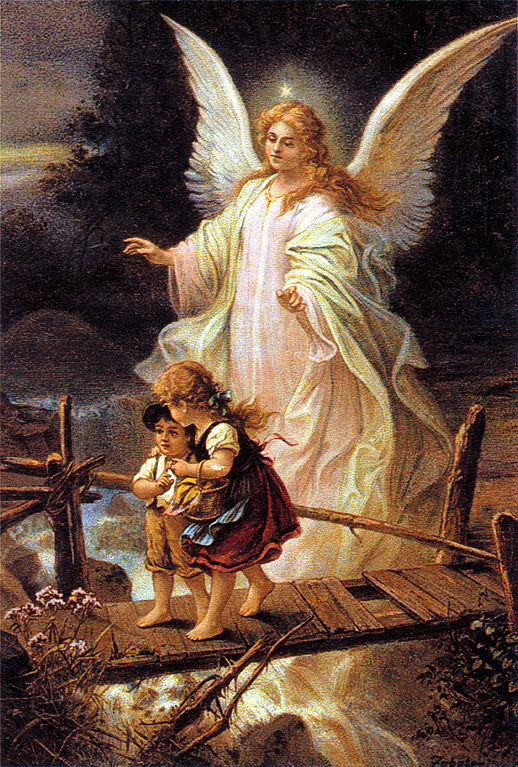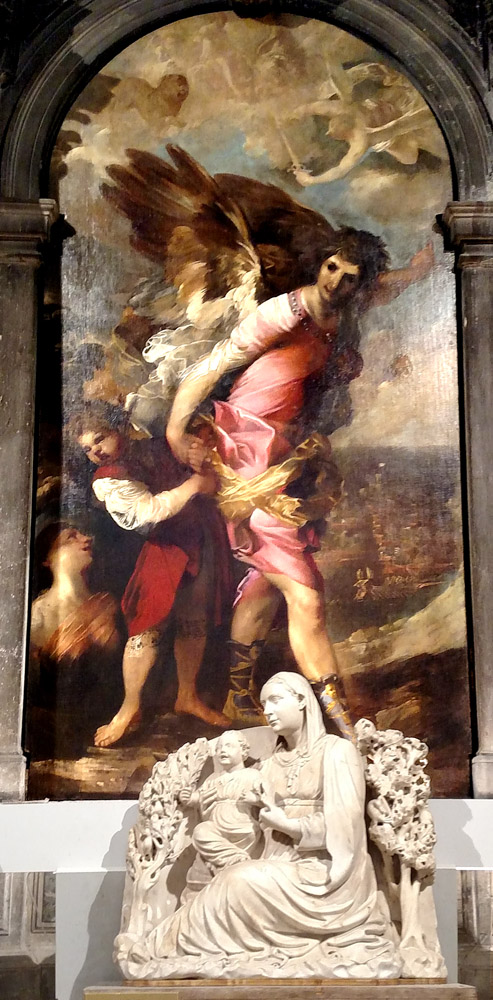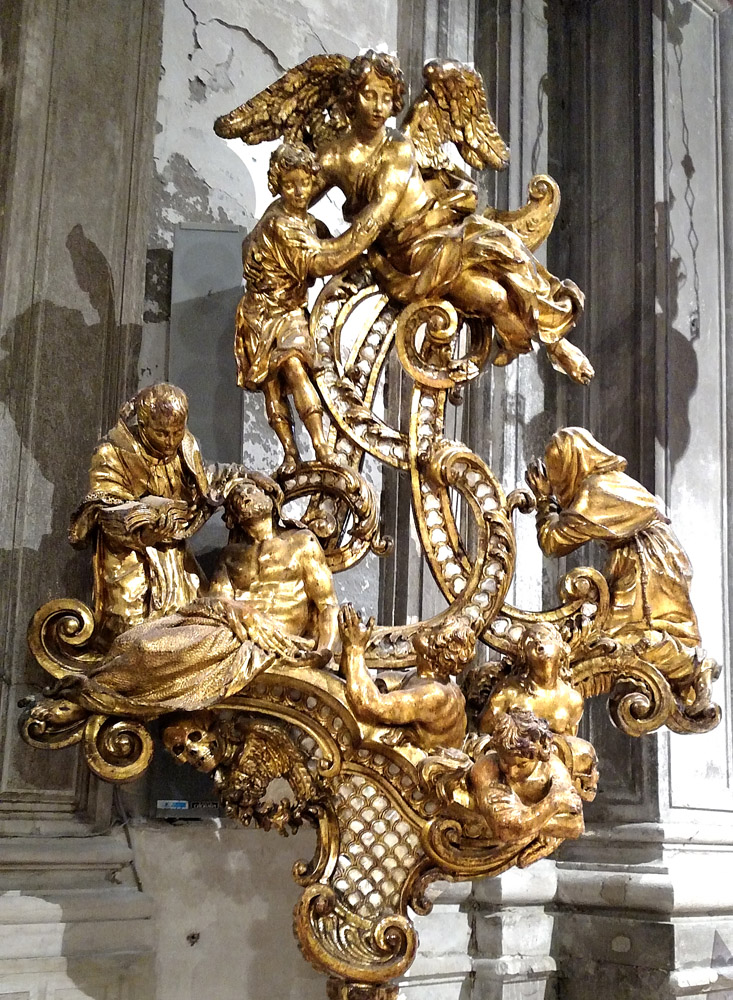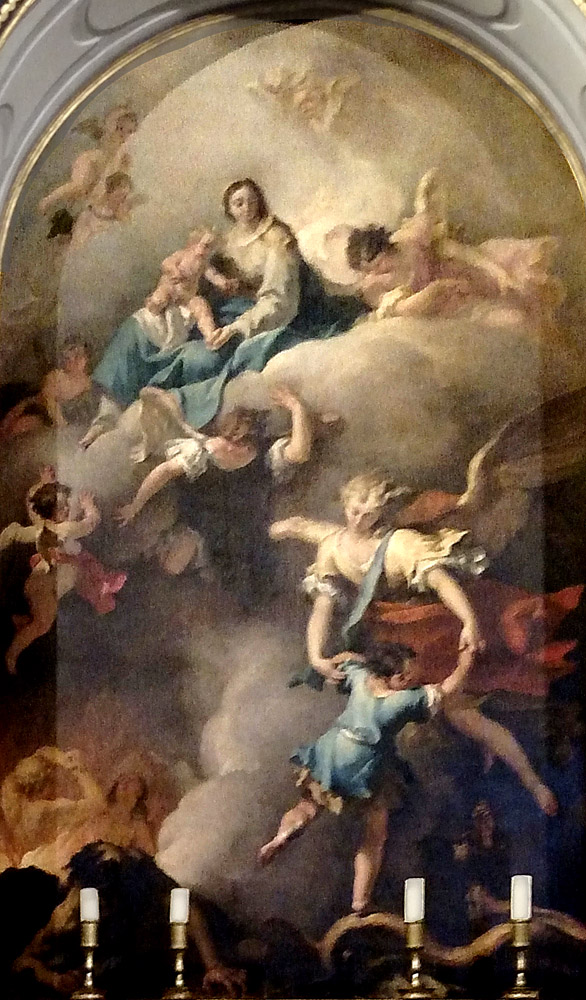Artistic representations of this idea became popular in the 17th century and continue to this day. Typically, an angel directs a boy along a narrow and hazardous path, as in the first picture at right. In later examples a girl is added and the path becomes a bridge.

DISTINGUISHING THE GUARDIAN ANGEL FROM THE ARCHANGEL RAPHAEL
Guardian Angel images developed from the iconography of the Archangel Raphael (Hammond, 86). Sometimes it is hard to distinguish the one type from the other. In images of Raphael and Tobias, one will likely see the fish that will be used to cure Tobit's blindness, held on a string by either Raphael or Tobias. Raphael will usually have something that identifies him as a traveler, such as a broad hat and a staff with a gourd hanging from it. Guardian-angel images usually lack these features. The angel's garb will be more like that of angels generally, and there will be no fish. The boy will be wearing ragged peasant clothes, unlike Tobias's middle-class garments, and he will look younger than Tobias usually does. The terrain is also distinctive: Tobias and Raphael walk along relatively easy paths.That said, it is clear that some artists have knowingly or unknowingly blended the two traditions. For example, the base of a statuette in St. Mark's, Venice portrays souls in Purgatory, as in guardian-angel images, but the figures above them are clearly Raphael and Tobias. And in Piazzetta's painting of an angel greeting Anthony of Padua and Louis of Toulouse, most of the iconography belongs to guardian-angel images but a pouch or gourd hangs from the angel's neck, a feature much more likely in images of St. Raphael.
It is possible that the mixing of the two traditions is not a mistake but a nod to Tobit 5:22, where Tobit reassures his wife that "the good angel of God doth accompany" their son on his journey. Tobit does not know that the person accompanying Tobias is actually an angel, so a Christian could think of this "good angel" as his son's guardian angel.
Prepared in 2018 by Richard Stracke, Emeritus Professor of English, Augusta University. Revised 2021-05-30.

An early example of the guardian angel leading a child along the right path. (See the description page.)

In this monument to a Venetian noble his guardian angel conducts his soul to Heaven. (See the description page.)

A guardian angel conducts a soul to Heaven. (See the description page.)
NOTES
1 Catholic Encyclopedia, s.v. "Guardian Angel." Catechism of the Catholic Church, ¶336.